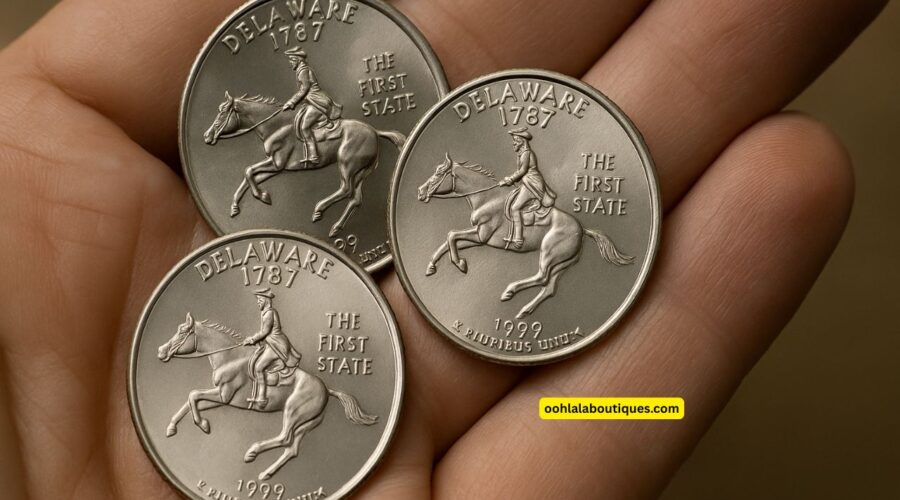5 Rare U.S. State Quarters Worth Up To $6.7 Million You May Still Have
Did you know that some state quarters from the U.S. Mint’s 1999–2008 program can be worth millions? While most quarters remain at face value, a handful of rare error coins and experimental mintings have skyrocketed in value—sometimes fetching up to $6.7 million each, and a few might still be hiding in your pocket.
In this article, we uncover the top 5 most valuable state quarters still in circulation, complete with detailed facts, figures, and grading insights.
Top 5 State Quarters Worth Millions
| State & Year | Type of Rarity | Condition/Grade | Reported Value |
|---|---|---|---|
| Delaware (1999‑P) | Experimental Sacagawea planchet, smooth edge, heavier alloy | MS66 | Up to $6,700,000 |
| Wisconsin (2004‑D) – Extra Leaf | Minting error with an additional corn leaf; Low/High varieties | MS67 | Around $6,000 |
| Georgia (1999‑P) | Experimental Sacagawea planchet (golden/greenish color) | Up to MS? (heavily rare) | Up to $10,000 |
| Connecticut (1999‑P) | Sacagawea alloy planchet error, smooth edge | MS69 | Up to $10,500 |
| South Carolina (2000‑P) | Flawless mint state, extreme MS grades (MS68–MS69) | MS69 | Around $8,000 |
1. 1999‑P Delaware Quarter
The very first coin in the Statehood series, this quarter is even rarer when struck on a Sacagawea dollar experimental planchet, showing a smooth edge, heavier weight (about 8.1g), and a metallic sheen. Only a few exist—and one graded MS66 sold for nearly $6.7 million
2. 2004‑D Wisconsin “Extra Leaf”
The Extra Leaf quarter from Wisconsin is famous for showing an extra corn leaf—either a “Low” or “High” variety. In high mint-grade (MS67), specimens have sold for up to $6,000
3. 1999‑P Georgia Quarter
Similar to Delaware’s coin, the Georgia quarter was accidentally struck on a Sacagawea alloy planchet, giving it a golden or greenish hue, lacking reeded edges, and weighing more than the standard 5.67 g. One example has sold for about $10,000
4. 1999‑P Connecticut Quarter
One of the rarest coins due to its Sacagawea planchet error, the Connecticut quarter boasts a golden color, smooth edge, and heavier feel. A premium-grade MS69 coin fetched around $10,500
5. 2000‑P South Carolina Quarter
Featuring the Carolina wren and palmetto tree, this quarter is still common in circulation—but in ultra-high mint state (MS69), it becomes extremely rare. One such coin sold for approximately $8,000
Understanding Why These Quarters Are Valuable
Error & Experimental Rarity
- Sacagawea planchet errors (Delaware, Georgia, Connecticut) feature different weight, color, and lack reeding due to wrong metal composition.
- Minting errors like the Wisconsin Extra Leaf create distinct visual anomalies, boosting collectability.
Condition (Mint State Grades)
- Grades from MS66 to MS69 denote near-perfect condition: crisp design details, no wear or marks.
- These grades drastically increase value.
Limited Quantity
- Only handfuls of these coin types were produced—especially experimental and mint-error varieties—making them extremely rare.
Modern state quarters may seem ordinary, but a few rare specimens—like the Delaware experimental planchet or Wisconsin Extra Leaf—can be worth thousands, even millions.
With sharp eyes and a bit of luck, you might find a hidden treasure in your pocket. Stay observant, educate yourself on identifying traits, and you might just hold a piece of numismatic history. Happy hunting!
FAQs
Could I have one of these quarters in my pocket?
Absolutely. Though rare, these error coins were sometimes released unknowingly into circulation. Check for unusual color, smooth edges, extra leaves, or doubling.
How can I identify if I have a valuable coin?
Look for a smooth edge (no reeds), heavier weight, golden hue, extra design elements (like the corn leaf), or sharp doubling. For accurate grading, consult a numismatic expert.
What should I do if I find one?
Do not clean or handle it improperly. Store it in a protective sleeve and seek professional authentication before attempting to sell.


Leave a Reply